‘If you see a mamba, don’t bamba, just let it hamba’
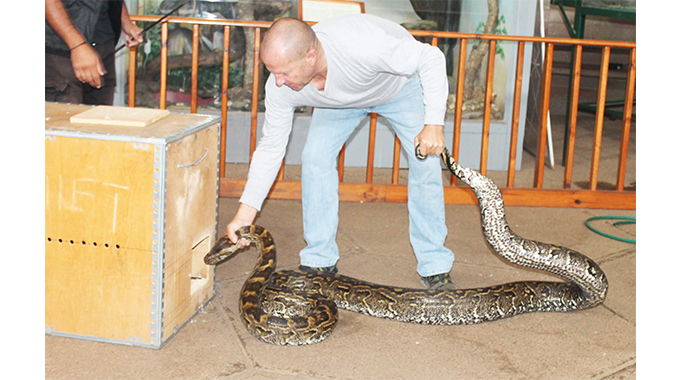
Angela Sibanda, Chronicle Reporter
FOR most people, snakes are a scary sight and in most societies the reptiles are killed once spotted rarely with regard to whether they are venomous or not.
An isiNdebele term “umabonwa abulawe”, meaning to be killed on sight aptly sums up the fate of the reptile in society.
A local organisation, Zimbabwe Snake Removers operating in nine cities in the country has however, embarked on a mission to save snakes and promote peaceful coexistence between people and the reptiles.
In Bulawayo, the team is led by Mr Ross Johnston of Hillside suburb who keeps 60 snakes of different species. The deadly reptiles are kept at the Natural History Museum of Zimbabwe in Bulawayo where they are used for display purposes.
Mr Johnston said the majority of the snakes were caught around the city with a few being exotic ones. The Chronicle news crew yesterday caught up with Mr Johnston and his team as they were removing the snakes from the museum, taking them to his house in preparation for fumigation on Monday.
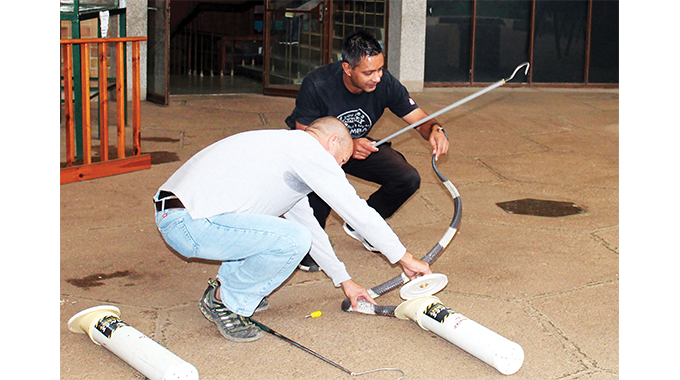
Mr Ross Johnston with the assistance of Mr Amhed Esat bags one of the reptiles in preparation for moving it out of the museum yesterday
The process will last week after which the snakes would be taken back to the museum.
In an interview, Mr Johnston said most snakes that they catch are treated as they would have been attacked by people and then released back to their natural habitat.
“Just like people, snakes have a life span. Some of them have been here for about 10 years and if we catch them, we don’t necessarily need to keep them for display, but rather we treat them before releasing them back to their natural habitat,” he said.
“We only keep a few ones to replace the ones that would have died with 99 percent of them being released back to the forest.”
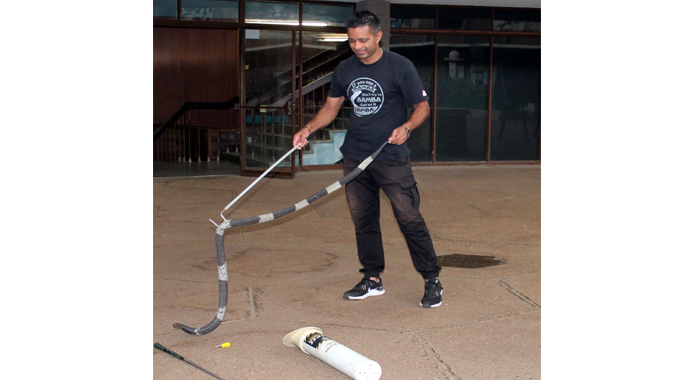
“We keep them for a week during which we will be feeding them and also monitoring their health. We normally take them to places like national parks,” said Mr Johnston. He said 80 percent of snakes in their collection are local species with a majority of them caught around Bulawayo.
“From our collection, only three species don’t originate from Bulawayo. Out of those, 90 percent of them are cobras, which are very venomous,” said Mr Johnston.
“We always tell people not to kill or injure snakes, especially cobras because once you attempt to do so, they will spit their venom on you. If you are unlucky and the venom gets into your eyes, you will go blind.”
Mr Johnston said in their collection, they have black and green mambas, forest cobras, gabon vipers, boomslangs, spitting cobras, pythons, file snakes, grass snakes and a few exotics ones.
“We keep snakes of the same species in one cage because some snakes eat other species. In some cases, you might leave two different snakes and when you come back you only find one left,” he said.
“We have a good working relationship with ZimParks and when one calls them, they in turn contact us. Most of the calls that we get are from people who spotted snakes either the previous day or week and normally we don’t attend to those.”
He said snakes are mobile and don’t like human distraction.
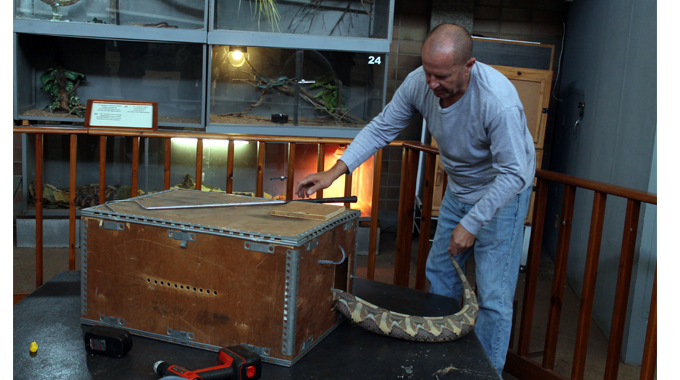
“They don’t like being around people, they only come to people when seeking shelter, food and water, so if you have a bushy yard, snakes are highly likely to come and hide while looking for prey. We get a lot of calls from people who keep chickens. A snake will be after chickens,” said Mr Johnston.
He said they charge a minimal fee of US$10 for their service, which however, can also go up depending on the distance.
“The money is usually for fuel replacement as it is too little to cover the medicals that are needed in the event that one gets bitten,” he said.
Mr Johnson is a self-taught snake handler who developed an interest in snakes at a tender age.
“Everything I do is all self-taught. I have always loved snakes since I was a little boy so I kept them as pets from that young age. I have acquired knowledge on their behavioural patterns, the venom; including skills on how to capture them,” said Mr Johnston.
“Burning tyres of any form of rubber, sprinkling disinfectants or using snake repellent to deal with snakes is sheer waste of time as it has been scientifically proven that it is not effective in eradicating snakes.”
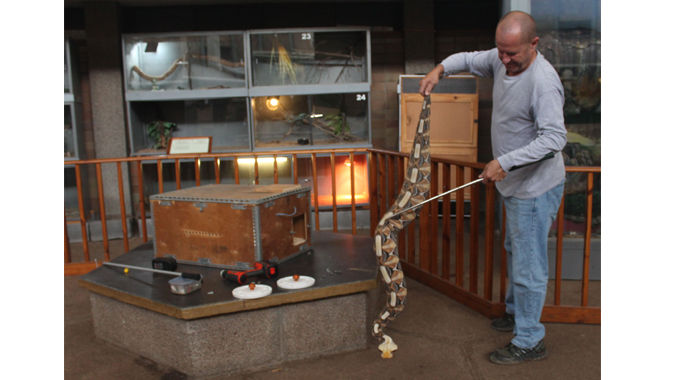
His partner, Mr Ahmed Esat said their aim in catching snakes is to reduce their deaths and protect snake species from becoming extinct.
“We are hoping that by catching snakes, we will reduce the number of snakes killed in the country and save them from extinction. The file snake is one of the few that are not venomous, but it gets killed, especially in places such as Nyamandlovu and Tsholotsho in Matabeleland North where they are mostly found,” said Mr Esat.
“We have a theme that says, ‘If you see a mamba, don’t try to bamba it, just let it hamba’, and that way we are also protecting people from being killed by snakes.”
Bulawayo Natural History Museum director Dr Moira Fitzpatrick said snakes are a tourist attraction.
“The snakes are kept in tight and strong cages and we have never had any cases when they were a threat to people around. A number of people come to the museum and the snakes are part of the attraction that our visitors get to see,” she said.


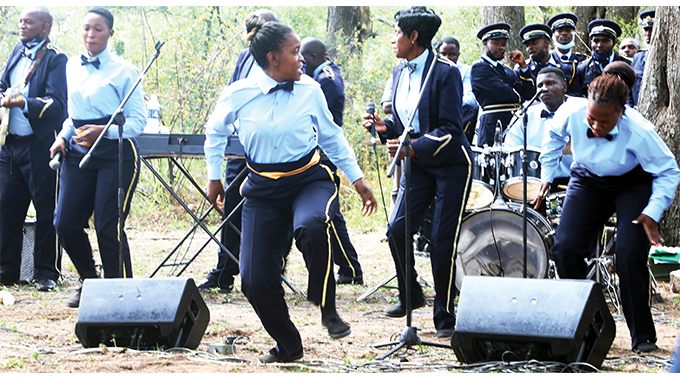









Comments